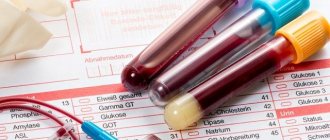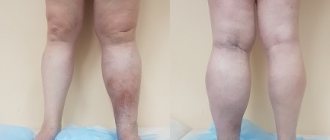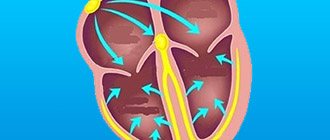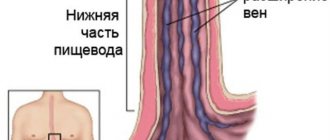Pathogenesis
The size of the heart directly depends on a person’s body weight. In addition, the anatomical features of the chest are important. In young men, the heart volume is approximately 760 cm3, in women - 580 cm3. With age, the size of the muscle may change slightly, which is not a pathological process.
Under the influence of various unfavorable factors, cardiomegaly can occur. It is customary to talk about “bull’s heart” disease when the size of the organ in adults exceeds 11 x 11 x 8.5 cm, in children - 3 x 4 x 1.8 cm. As a rule, the pathogenesis of the disease is based on an increase in one or both ventricles, their expansion, accumulation of metabolic end products in the cavity, neoplastic processes.
Characteristics of the condition
Cardiomegaly is often called "bull's heart." This term implies an increase in heart size of more than 500 g (with a normal adult size of 300 g) due to:
- enlargement of the heart chambers without thickening of muscle tissue (dilatation);
- thickening of muscle tissue.
Cardiomegaly develops more often in men.
Etiology
Pathology is not an independent disease. The process of development of cardiomegaly begins against the background of other cardiovascular disorders or physiological changes. The main causes of bull's heart disease are listed below.
1. Congenital:
- Genetic predisposition.
- Congenital heart defects.
- Abnormally located valve attachment points.
- Unhealthy lifestyle of a woman during pregnancy (unbalanced diet, uncontrolled use of medications, smoking, use of drugs and alcoholic beverages, injuries, infectious diseases, living in a region with an unfavorable environmental situation).
2. Purchased:
- Atherosclerosis.
- Neoplasms of both benign and malignant nature.
- Hypertension.
- Heart valve defects.
- Viral myocarditis.
- Cardiomyopathy.
- Increased blood pressure in the pulmonary circulation.
- Cardiac ischemia.
- Arrhythmia.
- Diabetes.
- Iron-deficiency anemia.
- Cardiomyodystrophy.
- Tobacco smoking.
- Regular consumption of alcoholic beverages.
- Hormonal imbalance.
- Pathologies of the thyroid gland.
- Long-term use of certain medications (in particular, Adriamycin, Methyldopa, Idarubicin and Novocainamide).
- Impaired kidney function.
- Pericarditis.
- Endocarditis.
Regardless of the cause of the disease, “bull’s heart”, treatment of the pathology cannot be delayed. Although the disease develops very slowly, it leads to irreversible consequences, in particular death.
How to properly treat viral diseases of the nasopharyngeal system
To ensure that a viral disease does not affect vital organs, treatment must be prescribed and supervised by a doctor. In no case should this be self-medication or based on the advice of pharmacists, as is often the case. It's no secret that treatment is often prescribed directly in pharmacies.
However, there are general recommendations. The first is maintaining bed rest, which reduces the spread of the virus throughout the body. Secondly, it is in the first three days that a course of antiviral therapy must be carried out. If you didn't do this, then you are late. On the fourth or fifth day, the virus is no longer in the blood. With paracetamol, aspirin and other antipyretics, we remove the symptoms, but not the pathogen itself. And if the temperature remains high for more than four days, then most likely a bacterial infection has joined the virus. And then the question of prescribing an antibiotic may arise.
This is the most general scheme. Only a doctor can determine medications, the regimen for taking them, and the regimen.
The consequences of improper treatment or lack thereof can be very dire. For example, a pathological heart condition popularly known as “bull’s heart” is associated with beer abuse. But it can also be the result of neglected or undiagnosed myocarditis, that is, inflammation of the heart after a viral infection. The heart increases (“spreads”) in size, while losing its pumping function. And as a result, heart failure develops: shortness of breath, swelling of the legs, accumulation of fluid in the abdomen. And then only a heart transplant. There are no other radical methods of combating the “bull’s heart”.
Risk factors
Often the disease occurs due to non-pathological causes. Bull's heart disease is seen in Wiki as a problem that occurs primarily in athletes. Doctors also say that the main risk factor is regular and high-intensity physical activity.
What is the reason for this? In any athlete, the heart muscle gets used to working in an increased mode over time. Its dimensions are also increasing. The development of bull's heart disease occurs if a person stops exercising even for a short time. In addition, no athlete is immune from injuries and pathologies, the presence of which does not allow regular exercise.
As a result, the heart cannot decrease in size and continues to work at an increased rate. But at the same time, the body no longer needs it. The consequence is stagnation of liquid connective tissue, oxygen starvation, and heart failure.
In addition, allergies are a risk factor. Even intolerance to any food product can become an impetus for the development of bull's heart disease. This is explained by the fact that the antibodies produced provoke sensitization, which often leads to autoimmune conditions. In this case, the prognosis is considered unfavorable.
As mentioned above, one of the reasons is alcoholism. According to numerous studies, beer drinkers are most susceptible to pathology.
Big heart of a man
Simon, what does a man's big heart mean to you?
Simon Matskeplishvili:
“A man with a big heart” - who doesn’t want that to be said about him? This is the name given to kind, sympathetic people who can always understand and help, who know how to sympathize with the pain of others, who sincerely rejoice in the happiness of other people, who give a good mood and share the warmth and light of their soul with everyone.
I deliberately gave such a long and exclusively positive definition of a “big heart” in order to contrast it with a medical, namely cardiological, “look from the outside.” After all, for doctors, an enlarged heart in a patient is a serious problem.
This issue is especially relevant from the perspective of men’s health, which in our country requires close attention. Opening the congress in Sochi, the President of the Russian Society “Male and Reproductive Health”, Academician Armais Kamalov, presented his vision of the problem. He said that “for the modern man, the desire to increase life expectancy should not be determined by the fact that he will live longer in old age, but by the fact that old age should come much later.” Well, ancient Chinese wisdom generally says that “The trick of life is to die young, but to do it as late as possible.”
You may ask: why exactly men’s health and “what are women to blame for?” I will answer, of course, they have nothing to do with it. But... Firstly, Russian men live 13 years less than women. And, secondly, despite the presence of a large number of programs for the protection of maternal and childhood health in our country, there is no unified state program for the protection of men’s health. Well, since they say that in every joke there is only a part of the joke, then the statement “the weaker sex is actually the male”, by and large, is true. It is very important that the forum involved an exchange of experience between specialists in various fields. Moreover, a separate meeting was devoted to interdisciplinary problems of men's health.
At which you gave a presentation...
Simon Matskeplishvili:
In addition to me, a cardiologist, endocrinologists, somnologists, gynecologists and even psychiatrists spoke. And they agreed that the thesis “Take care of men” is more relevant than ever.
What is the problem with a “big heart”?
Simon Matskeplishvili:
An increase in its size indicates some kind of trouble. Moreover, this is not necessarily a heart disease. For example, among professional athletes we often observe this phenomenon, which develops in response to excessive physical activity. That is why leaving high-performance sports requires mandatory medical support and observation, with careful rehabilitation and a gradual transition to a “less athletic life.” Exactly the same way we rehabilitate truly sick people.
But, unfortunately, heart enlargement most often develops as a result of heart diseases, which can have completely different causes and manifestations. Hypertension, or increased blood pressure, prevails here. Since in this condition the heart has to pump blood under increased load, the volume of muscle tissue increases, just like with physical exercise. When working “under pressure,” the heart muscle gradually thickens and leads to an increase in the size of the heart itself. In the future, this can lead to a deficiency of nutrients and oxygen, the increased need for which cannot always be compensated by the body.
Another fairly common cause of heart enlargement is cardiomyopathy. This is a disease in which dystrophy of the heart muscle occurs, its thinning and significant expansion of the cavities of the heart. The pathology can be hereditary, but often occurs as a result of heart damage from viruses or, for example, excessive alcohol consumption. The heart can also enlarge with long-term arrhythmia, diseases of the heart valves, or after a heart attack.
“Big heart” is always scary...
Simon Matskeplishvili:
The thing is that this condition necessarily leads to the development of heart failure. And failure is the final outcome of almost all heart diseases, the mortality rate from which significantly exceeds that from all types of malignant neoplasms. After all, as they say, everyone is afraid of dying from cancer, but they die from heart failure. That is why diseases of the cardiovascular system must be treated at the earliest stages, before irreversible changes occur. The most effective measure to reduce mortality from them is prevention. Yes, a healthy lifestyle imposed on everyone, giving up bad habits, regular physical activity, proper diet and sleep. As academician Yuri Buziashvili says, and one cannot but agree, 320 out of 365 days a year we must take care of our health in order to be able to allow ourselves to relax in the remaining 45 days.
Back in 2002, one well-known Russian newspaper asked me to answer a reader’s question: “Is it possible to continue sexual activity after a heart attack?” I, unaware of the consequences, gave a detailed answer in which I said that, firstly, of course, it is possible and, secondly, we carry out certain studies that allow us to accurately answer this question for each individual patient and give him recommendations how to make this process safer. The very next day, the corridor in front of my office was filled with young and not so young men. I realized how relevant this problem is. Let me give you a simple example. In Great Britain, more than 100 thousand married couples were surveyed: what do they consider the main condition for a normal family life, what is important for a happy marriage? So, honesty and respect between spouses came first and second. And the third is sexual relations. Left behind were income, everyday and religious problems. And even children.
But the whole point is that men with heart disease are simply afraid to continue or resume this very sexual activity. And we, cardiologists, help them with this very little. It is cardiologists, and not urologists or andrologists, to whom they mainly turn. A recent Dutch study of nearly 1,000 cardiologists found that only 3 percent—31 in total—discussed sexual activity with their patients. “The patient didn’t ask”, “There was no time”, “I was shy”... These are the explanations received from cardiologists, among many other reasons that prevent the solution of the most important task for men. What can we say about our country, in which the majority of cardiologists are women, and the majority of patients are men. And they expect the doctor himself to start the discussion, they are worried, they are afraid. Men rarely go to doctors in general. And the most common reason for visiting a cardiologist: my wife forced me to.
But maybe the myths, of which there are many around this topic, are also getting in the way?
Simon Matskeplishvili:
There are many myths. For example, this: sex leads to overload of the cardiovascular system. In fact, in terms of physical activity, it is no higher than riding a bicycle or ironing clothes. We often say: if a patient can climb to the 2-3 floor without problems and quickly, then he will not have problems with sex. Or another myth: sex can cause a heart attack or even death. Indeed, there is a small risk of cardiac complications when sexual activity is resumed after a myocardial infarction. But with normal rehabilitation, it does not exceed this risk in completely healthy men who do not suffer from any heart disease.
According to global data, at least 50% of deaths from heart attacks in men occur without what they consider to be a cardiovascular disease. And here I would like to say about the most important thing. Many men suffer from so-called erectile dysfunction, or, as it is often called, sexual weakness, or impotence. So, for a man under 55 years of age with erectile dysfunction without the presence of diseases of the cardiovascular system, the risk of dying from an acute heart attack is 50 (!!!) times higher than for his peer with normal sexual function.
If the patient can quickly climb to the 2-3 floor, then he will not have problems with sex
Moreover, the so-called third Princeton consensus, adopted in 2012, states: “A man with erectile dysfunction without clinical manifestations of cardiovascular disease is a serious cardiac patient.” The bottom line is that the cause of both erectile dysfunction and fatal heart attacks is most often the same process, which manifests itself in the form of impaired sexual function 3-4 years before it leads to serious heart disease. In other words, nature gives us one of the best signals that should force both doctors and patients to pay serious attention to identifying hidden problems and successfully preventing dangerous complications. So the expression that the way to a man’s heart is through his stomach can also be considered a myth. In a cardiological sense, this path lies through a completely different organ.
What is the conclusion?
Simon Matskeplishvili:
Let our men have a “big heart” only in a figurative sense. So that everyone feels good and calm next to them, and let their “fiery engine” remain at normal sizes for many years.
Clinical manifestations
An enlarged heart in itself is a symptom of one of the above diseases. As organ parameters change, a person develops the following alarming signs:
- Rhythm disturbances.
- Increased blood pressure.
- Increased heart rate.
- Shortness of breath during physical activity.
- Painful sensations in the chest area.
- Excessive sweating.
These clinical manifestations are not specific, but if they occur, you should consult a physician or cardiologist as soon as possible.
Symptoms of bull's heart disease in newborns:
- Paleness of the skin.
- Blueness around the mouth and around the eyes.
- Shallow breathing. It's unrhythmic.
- Cardiopalmus.
- Apathy.
- Lethargy.
- Lack of appetite.
- Edema of the lower extremities.
- Excessive sweating.
Regardless of the causes and symptoms of bull's heart disease, if alarming signs appear, the child should be shown to a pediatrician and cardiologist as soon as possible. Any delay could cost the baby his life. According to statistics, the survival rate among children is 50%.
What types of disease?
According to the modern classification, cardiomyopathies can be divided into two main types and several characteristic groups. As previously mentioned, the disease can appear either on its own or as a result of other diseases. In the first case, the causes are often not identifiable and cannot be established using traditional diagnostic methods.
Considering the causes of cardiomyopathies, we can distinguish different types of this disease :
- Primary origin, when the etiology of occurrence is not determined;
- Secondary form with determination of the cause of the development of pathological changes in the myocardium.
Classification is also carried out according to the mechanism of development, pathogenesis:
- Hypertrophic;
- Alcoholic;
- Dilation;
- Dishormonal;
- Restrictive.
Diagnostics
During the initial appointment, the doctor collects anamnesis and conducts a physical examination of the patient. In addition, the specialist issues a referral for a comprehensive examination, including:
- X-ray.
- Electrocardiography.
- Echocardiography.
- Blood tests (general and biochemical).
- Assessment of lipid metabolism.
- Testing for rheumatoid factor.
- Hormone analysis.
- Bac sowing.
Based on the diagnostic results, the doctor selects the most effective method of treating bull's heart disease. If surgical intervention is necessary, catheterization of the cardiac cavities is performed. In addition, patients undergo coronary angiography before surgery. With its help, the doctor is able to assess the degree of patency of the coronary arteries.
Conservative treatment methods
It is important to understand that cardiomegaly is not an independent disease. In this regard, it is initially necessary to get rid of the cause of its development. The goal of treatment is to stop the progression of the disease. At present, it is only possible to prevent further deformation of the heart.
The classic regimen of drug treatment for pathology involves taking or administering the following drugs:
- Antihypertensive drugs.
- Anticoagulants. Active components prevent the formation of blood clots.
- Beta blockers. Drugs belonging to this group normalize the functioning of the heart muscle.
- Diuretics. Prescribed if excess sodium is detected in the patient’s body.
Most patients experience surges in blood pressure. In such cases, additional drugs are prescribed that normalize the indicator. If there are other concomitant pathologies, an appropriate treatment regimen is drawn up.
Antibacterial therapy is indicated only if an inflammatory process occurs in the patient’s body.
Drug treatment will not lead to a positive result if a person does not follow the principles of a healthy lifestyle. Doctors recommend that all patients stop smoking and drinking alcohol. In addition, it is necessary to regularly expose the body to moderate physical activity.
How does heart disease develop?
As a rule, acquired heart defects are associated with infectious diseases. In childhood it is rheumatism. This is what people call back pain, which is completely wrong. It is actually a viral disease caused by group A β-hemolytic streptococcus. It is common in our environment but causes heart and joint damage in those who are genetically predisposed to it. It is important to identify this in childhood and adolescence. To do this, a genetic analysis is carried out and, if detected, a prophylactic dose of bicillin is prescribed for life. Identifying a person’s rheumatic predisposition is a priority for pediatricians and pediatric cardiologists. If they missed something, then in adulthood we are dealing with a ready-made heart defect.
It is important!
Any nasopharyngeal infections, sore throat, ARVI, acute respiratory infections, influenza can affect the heart. Especially if a person violates the regime, that is, suffers from a “sickness on his legs”, continues to go to work and is treated incorrectly. Then the virus spreads throughout the body, affecting various organs, including the heart.
The next group of causes of acquired heart defects are chest injuries received from a fall from a height or from blows to the chest (sports competitions, knife wounds, etc.). In this case, the subvalvular structures are more often damaged (torn off), namely the threads (chords) that hold the valves in a tense state. The result is valve failure. By the way, the separation of chords caused by the formation of atherosclerotic plaques on them can lead to the same consequences.
Surgical intervention
If conservative methods are ineffective, the doctor evaluates the advisability of surgical treatment. The goal of the intervention is to normalize or maintain the functioning of the heart muscle.
Currently, the following surgical treatment methods are used in practice:
- Valve implantation.
- Installation of a pacemaker.
- Coronary bypass surgery.
- Installation of devices that provide auxiliary blood circulation.
In most cases, people's quality of life improves significantly after surgery. Often the progression of the pathology can be stopped.
Adjusting your diet
All patients must follow a diet. Basic principles of therapeutic nutrition:
- For breakfast you should eat porridge from all kinds of cereals. The ideal dessert is fruit.
- For lunch, you need to eat foods high in protein and foods of plant origin.
- Dinner should consist exclusively of low-calorie dishes.
- In between meals, you can snack on vegetables, fruits and low-fat yogurt.
If you have cardiomegaly, it is forbidden to consume canned food, sugar, fatty foods, and animal products.
Forecast
The outcome of the disease directly depends on the timeliness of visiting a doctor. With proper treatment, the deformation of the organ stops. But in order to prevent your health from deteriorating, you must constantly follow the recommendations of doctors.
Regarding how many people live with bull's heart disease. Children have a poor prognosis. Survival rate is 50%. In this case, death most often occurs before the age of three months. Some of the survivors recover completely, while others show signs of heart failure.
In adults, the prognosis is more favorable. An exception is cardiomegaly, the development of which was provoked by the consumption of alcoholic beverages. More than a third of alcoholics die within 3 years after developing the disease. The main causes of death are thromboembolism and heart failure.
Signs of pathology
Unfortunately, the symptoms of the described pathology are not specific. They accompany any heart disease and require a visit to a cardiologist and additional research. The main symptoms are as follows:
- Increased fatigue.
- Reduced ability to exercise.
- Shortness of breath in the middle of the night and after physical exertion.
- Swelling in the area of the feet and legs.
- Feeling of heartbeat.
- Pain behind the sternum.
- Abdominal enlargement.
In children, in the absence of correction of the condition, starting from preschool age, the following symptoms are noted:
- Decreased appetite.
- Sleep disturbance.
- Fatigue.
- Increase in heart rate.
- Poor exercise tolerance.
- Blue discoloration of the nasolabial triangle.
- Failure in learning.
- Lability of the nervous system, neurological pathologies.
Diagnostic tactics and treatment practically do not depend on the patient’s age. The sooner correction of the condition begins, the greater the patient’s chances for a normal life.











